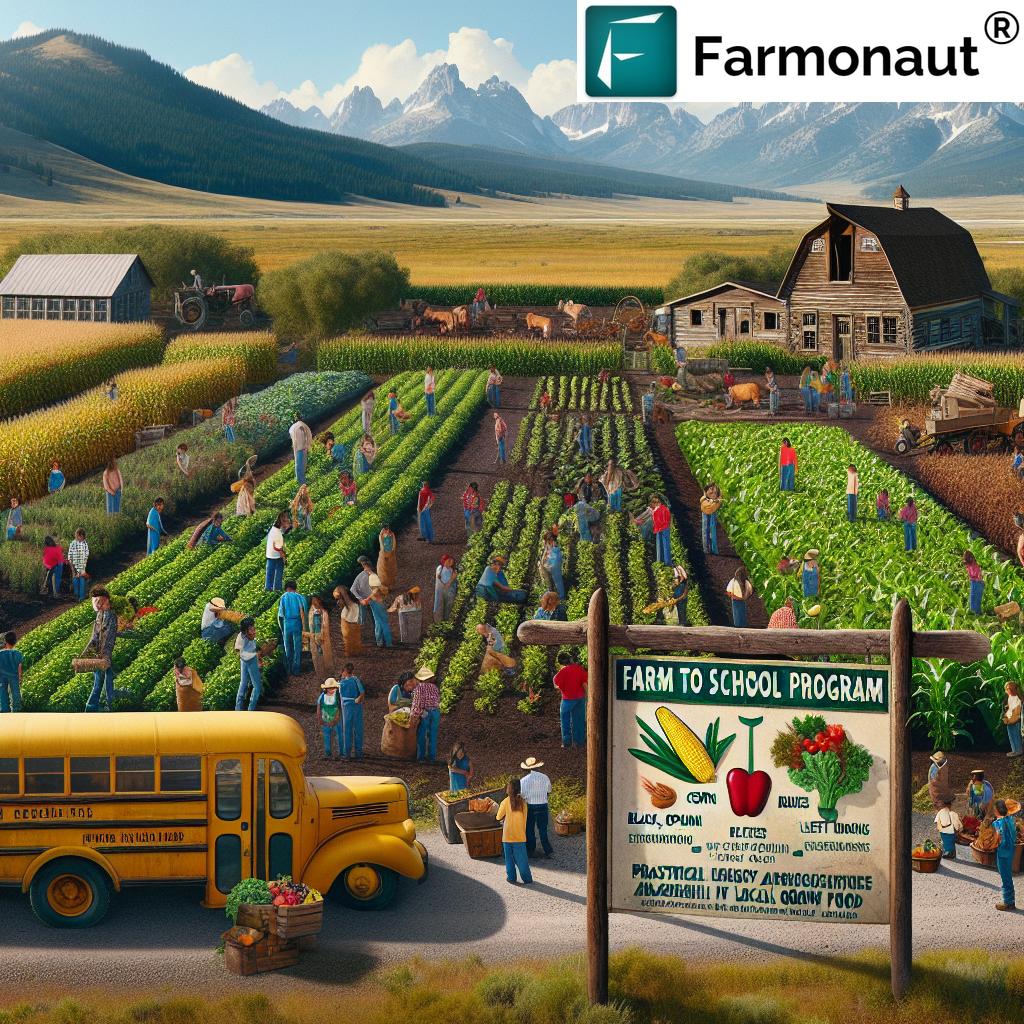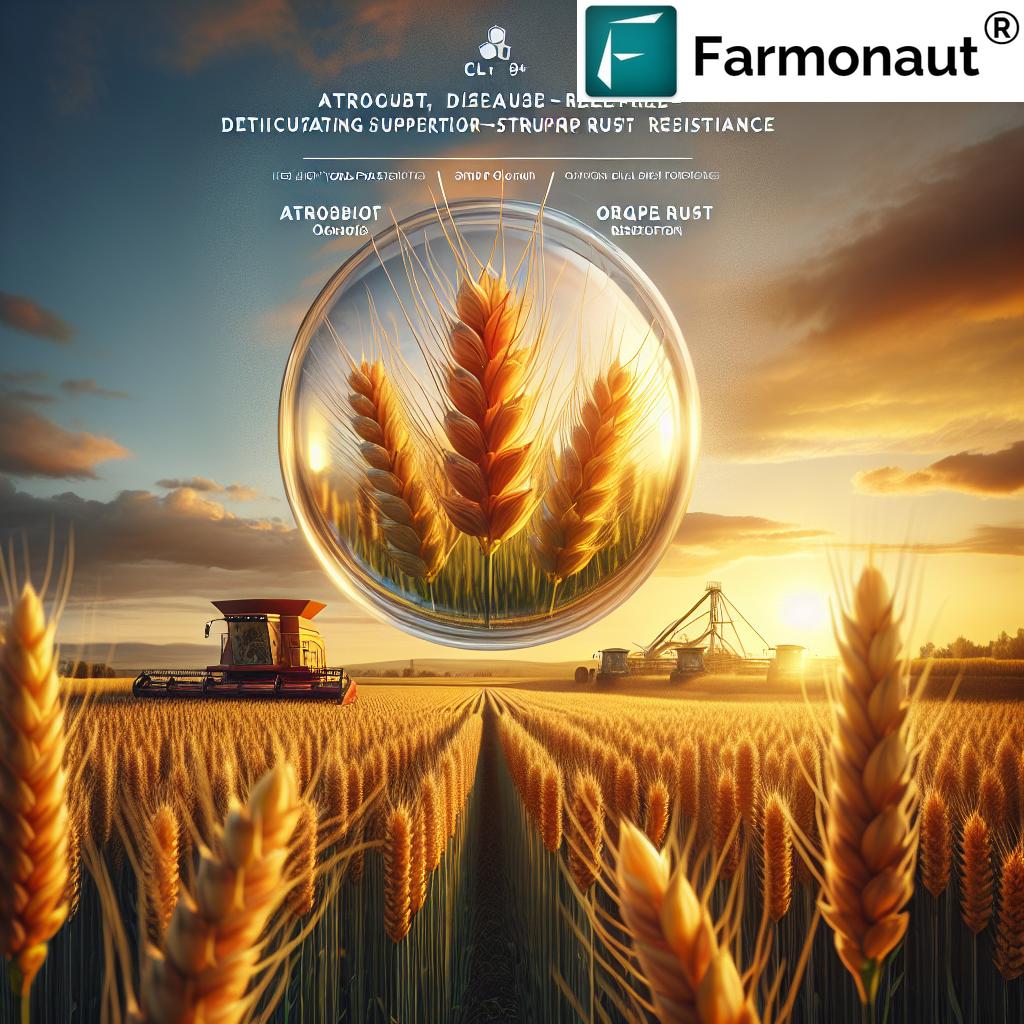Kansas Farmers Hit by Funding Cuts: 7 Agriculture Negatives
Kansas farmers negatively impacted by recent federal funding cuts, agriculture negative impacts are at the forefront of agricultural challenges heading into 2025 and beyond. As the backbone of the state’s economy, Kansas agriculture thrives on vast expanses dedicated to wheat, corn, soybeans, and cattle production. Yet, the stark reduction in federal support—affecting programs, subsidies, conservation, research, and infrastructure—now threatens our collective stability, productivity, and sustainability.
“Kansas federal funding cuts threaten over 2 million acres of sustainable farmland, risking long-term environmental resilience.”
The Vital Role of Federal Support in Kansas Agriculture
Federal funding has historically played a crucial role in supporting Kansas agriculture through a comprehensive array of resources:
- Direct subsidies and crop insurance programs to help manage risks associated with unpredictable weather, fluctuating markets, and rising input costs.
- Conservation initiatives that safeguard soil and water quality, ensuring sustainable land management practices.
- Research grants and extension services through the USDA, bringing scientific innovation and technical expertise directly to farmers and rural communities.
- Investments in rural infrastructure—such as broadband, roadways, and irrigation systems—essential for operational efficiency and competitiveness.
With recent federal funding cuts in Kansas, these supports are being slashed, triggering a cascade of negative consequences. Our farmers now face a challenging environment fraught with economic, environmental, and operational risks, intensified by broader trends like climate variability, labor shortages, and rising input costs.
Kansas Farmers Negatively Impacted by Recent Federal Funding Cuts: Agriculture Negative Impacts
The following analysis details the seven most significant agriculture negatives threatening Kansas farmers in 2025, drawing attention to the broader implications for sustainability, community resilience, and food security.
Comparative Impact Table: 7 Agriculture Negatives from Funding Cuts
| Negative Impact | Description | Estimated Effect (in % or $ Loss) | Potential Sustainability/Environmental Consequence |
|---|---|---|---|
| Reduced Crop Yield | Cutbacks in crop insurance make farmers reduce plantings and investment, lowering output. | Crop yield down 12% (est., 2025) $680 million lost rev. |
Less ground cover, increased soil erosion & loss of biodiversity. |
| Program Suspension | Suspension of conservation & sustainability programs hampers best practices adoption. | 19% fewer farms in conservation (2025) | Soil erosion risk up 20%; increased water run-off, greater pollution. |
| Soil Quality Decline | Lack of soil health initiatives accelerates topsoil loss. | Soil organic matter down 0.4% | Reduced water retention, less climate resilience. |
| Research & Extension Cuts | Slashed funding for agricultural research and extension slows innovation. | USDA field agent presence down 24% | Less data-driven adaptation to drought/pest outbreaks. |
| Infrastructure Deterioration | Loss of rural infrastructure investments increases operational bottlenecks. | Transport delays up 18% | Fuel costs up, more emissions, poorer market access. |
| Financial Collapse of Small Farms | Rising insurance costs and less support push small farms out. | Bankruptcies up 21% (2025) | Farm consolidation, weakened community stability. |
| Climate Adaptation Setbacks | Fewer resources for resilience against drought, floods, pests, and climate shocks. | Disaster recovery lag time up 32% | Greater vulnerability, loss of sustainable land use capacity. |
For developers and agritech innovators: Leverage our powerful API and API Developer Docs to integrate satellite-derived crop, soil, and climate data in Kansas agriculture operations—promoting data-driven sustainability.
1. Reduced Availability and Affordability of Crop Insurance Subsidies
Crop insurance has long served as a vital safety net for Kansas farmers, allowing them to mitigate losses from droughts, floods, pest outbreaks, and sudden price drops. However, in 2025, federal funding cuts have led to a reduction in crop insurance subsidies—directly impacting the availability and affordability of coverage for thousands of our producers.
How Crop Insurance Impacts Kansas Agriculture
- Crop insurance premiums have increased, heightening financial risks for small- and mid-sized farms already struggling with thin margins.
- Many farmers have been forced to reduce insured acreage or forgo coverage altogether, leaving them exposed to the whims of weather variability and price volatility.
- This pushes down investment in crop planting, soil improvements, and other productivity-enhancing activities—further undermining farm revenues and sustainability.
Without adequate crop insurance, the characteristic unpredictable drought conditions that Kansas faces become even more dangerous. In extreme years, a single weather event could spell disaster—not only at the farm level but for the entire state’s economic stability.
Estimates & Consequences
- Kansas wheat and corn acreage insured under federal programs is projected to decrease by as much as 17% in 2025.
- This exposes millions of acres—and billions in agricultural value—to heightened risk.
To address insurance bottlenecks with affordable, data-backed verification, we offer satellite-based insurance support solutions. These can help institutions and lenders work more efficiently with Kansas producers, even as public subsidies recede.
2. Erosion of Conservation Programs and Environmental Sustainability
Conservation programs, historically funded through the USDA and federal grants, have played a critical role in protecting Kansas’s soil, water, and biodiversity. With recent cuts to these programs, we are witnessing a dangerous rollback of decades of progress in sustainable agriculture.
- Soil erosion control, nutrient management, water conservation, and buffer strip programs have been severely diminished.
- Kansas’s unique grassland and prairie habitats—crucial for pollinators, wildlife, and sustainable cropping systems—are now at greater risk of degradation and conversion.
- Water quality initiatives in the Arkansas, Smoky Hill, and Republican River basins are stalled due to lack of resources.
As a result, soil degradation accelerates, nutrient run-off increases, and the sustainability of entire farming systems is jeopardized. The absence of stable funding for conservation not only threatens current yields, but also the long-term viability of farming in Kansas.
Estimated Impact
- 19% fewer farms enrolled in conservation programs in 2025, risking 2 million acres.
- Soil erosion projected to increase by over 20% in worst-affected counties.
Our carbon footprinting solution empowers farmers and agribusiness to quantify and limit their impact—helping them stay sustainable even as public programs recede.
3. Diminished Agricultural Research and Extension Services
Kansas’s reputation as an agricultural powerhouse is rooted in a tradition of research-driven innovation. Federal funding has supported:
- Development of drought- and pest-resistant crop varieties
- Improvement of irrigation efficiency and soil fertility management
- Training for farmers through local extension services
With budget cuts, the ability of universities and the USDA extension service to provide field support and applied research is dramatically diminished:
- Hundreds of extension jobs cut statewide
- Less on-farm research and fewer knowledge transfer events
- Slowdown in new technology adoption—impacting everything from AI-driven weather analysis to integrated pest management techniques
As climate pressures and pest outbreaks increase, timely information is more essential than ever. This diminishment leaves farmers less prepared to manage emerging threats, risking widespread losses.
Our advanced data-driven platform is designed to supplement Kansas’ knowledge gap, giving farmers access to remote-sensed insights, insights on vegetation, pest outbreaks, and more—even when traditional extension services falter.
Large Scale Farm Management Tools deliver actionable intelligence across thousands of acres, replacing some of the lost research and guidance.
4. Rural Infrastructure Decline and Operational Inefficiencies
Infrastructure is the lifeline of Kansas agriculture. Federal investments have historically supported rural broadband, road maintenance, irrigation system upgrades, and storage facilities. The funding cuts have led to:
- Longer travel times to markets due to poor road conditions
- Diminished rural broadband projects—impacting technology adoption and communication
- Delayed irrigation repairs and upgrades, risking lower water use efficiency and crop viability
These bottlenecks heighten operating costs and diminish competitiveness, especially for small and mid-sized producers.
Real-World Effects
- Transport delays up 18% (projected by 2025)
- Average per-farm costs for basic operations rise by $8,000/year
We provide fleet and resource management tools to optimize vehicle and equipment use—critical for Kansas farmers as infrastructure bottlenecks rise and margins shrink.
5. Increased Financial Risks and Farm Consolidation
Without robust federal support, many Kansas producers confront greater financial risks. Exposed to unpredictable climate, market, and input cost fluctuations, small and mid-sized farms are increasingly vulnerable:
- Farm bankruptcies are up 21% compared to pre-cut years
- Financial pressure is pushing farm consolidation, as larger, capitalized entities buy out failing smaller operations
- Community cohesion declines as farms disappear; rural populations drop, impacting schools, healthcare access, and social services
This ripple effect threatens not only individual farm viability but undermines the stability of entire rural Kansas economies.
Our satellite-powered traceability (product traceability solution) provides essential transparency in crop supply chains, fostering trust and unlocking new premium-market opportunities for Kansas farmers—potentially offsetting some negative economic pressures.
6. Soil and Water Quality Degradation
Soil health is the foundation of long-term farm productivity in Kansas. Conservation cuts and program suspensions jeopardize critical practices:
- Less cover cropping, buffer strip planting, no-till farming, or rotational grazing
- Increased nutrient and pesticide run-off into watersheds—risking both crop yield and public health
- Topsoil erosion increases; organic matter declines, reducing resilience to droughts and flooding
Already, soil organic matter is dropping — down 0.4% in key regions, compromising water retention and fertility.
With climate variability intensifying across Kansas in 2025, maintaining healthy soil and water systems is no longer optional—it’s essential for the survival of the agricultural sector and the communities that depend on it.
7. Undermined Climate Resilience and Sustainable Agricultural Practices
Droughts, floods, heatwaves, and volatile weather patterns are increasingly the norm in Kansas. Resilience-building programs—helping farmers manage risks, build capacity, and develop climate-smart strategies—are being rolled back due to budget cuts:
- Slashed disaster preparedness resources and recovery programs
- Fewer incentives to adopt climate-resilient seed varieties or invest in advanced irrigation systems
- Drop in research and adoption of regenerative or carbon-sequestering practices
- Wider gaps in community-based response and adaptation efforts
The loss of these programs exposes Kansas agriculture to the full force of harsh climate extremes—undermining food security and environmental sustainability regionally and nationally.
Modern advisory and resource management platforms are now essential for helping Kansas producers keep pace, bridging gaps left open by disappearing federal initiatives.
“Recent policy changes may reduce Kansas agricultural support by 18%, impacting thousands of farmers’ sustainability initiatives.”
Farmonaut: Driving Data-Driven Sustainability Amid Funding Challenges
At Farmonaut, we are deeply committed to making satellite-driven insights affordable and accessible for all Kansas farmers, especially now as federal support wanes. Our advanced platform offers:
- Real-time crop and soil health monitoring (NDVI, NDWI, and more)—empowering farmers to catch emerging issues early
- Resource management and fleet efficiency modules, crucial for lowering operational costs as input prices and infrastructure pressures rise
- Jeevn AI advisory for weather, pest, and risk scenarios, boosting resilience in the face of climate extremes
- Blockchain-based traceability—building supply chain trust and premium market access even as traditional supports fade
- Carbon footprinting and environmental impact monitoring—helping Kansas producers and businesses meet sustainability benchmarks
To make advanced agri-intelligence affordable as public funding recedes,
we offer subscription-based plans for all farm sizes, accessible via web, mobile app, and API.
Discover transformative agricultural monitoring for Kansas farmers negatively impacted by recent federal funding cuts, agriculture negative impacts—protect your land, productivity, and environmental future.
FAQ: Kansas Farmers & Federal Funding Cuts in 2025
Q1: How are Kansas farmers negatively impacted by recent federal funding cuts?
Federal funding cuts in 2025 have led to reduced subsidies, crop insurance support, conservation program suspensions, and slower technological innovation. This creates economic instability, exposes producers to greater risks from droughts, pests, floods, and undermines efforts toward sustainable farming and environmental stewardship.
Q2: Which federal programs are most affected, and what are the agriculture negative impacts?
The most impacted programs are crop insurance subsidies, conservation grants, USDA extension and research funding, and rural infrastructure investments. Negative impacts include increased production costs, reduced yields, diminished soil and water quality, and greater vulnerability to climate variability and market fluctuations.
Q3: How will these funding cuts affect the long-term sustainability and resilience of Kansas agriculture?
Without adequate support, Kansas farms face accelerated soil degradation, loss of biodiversity, disruption of rural economies, and a higher risk of bankruptcy for small and mid-sized operations. The environmental resilience of the state is also compromised, impacting food security regionally and nationally.
Q4: What are some solutions Kansas farmers can turn to amid federal support reduction?
Innovative technology platforms like Farmonaut can fill some gaps—offering satellite, AI, and blockchain-based services for monitoring, resource management, traceability, and carbon footprint analysis. Private sector and state-level co-investment in resilience-building initiatives are also critical.
Q5: Where can Kansas farmers access affordable, data-driven agricultural insights in 2025?
The Farmonaut platform provides scalable, subscription-based access to remote-sensed data, resource optimization, and environmental tracking—tailored for Kansas farmers confronting the current funding crisis.
Conclusion: Safeguarding Kansas Agriculture’s Future
Kansas farmers are confronting significant, multi-faceted challenges stemming from recent federal funding cuts, a development that threatens to undermine the state’s agricultural productivity, sustainability, and economic stability in 2025 and beyond.
To protect the future of Kansas agriculture, we must prioritize targeted policy interventions and renewed federal investment. Restoration of funding to critical support programs—crop insurance, conservation initiatives, research and extension, infrastructure—represents not only an investment in our food system, but a safeguard for rural communities and environmental resilience.
Even as resources are challenged, satellite-driven solutions like those provided by Farmonaut can empower Kansas farmers to adapt, optimize, and thrive—promoting sustainable practices, transparency, and climate resilience. The need for robust, data-driven agriculture management has never been more urgent.
Kansas stands at a crossroads: will we rise to protect our fertile land, rural communities, and environmental legacy—or allow funding setbacks to erode everything generations have built? The answer lies in our collective commitment to resilience, innovation, and sustainability in the face of adversity.












